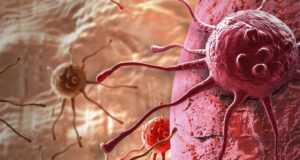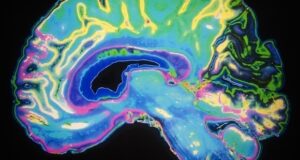New research reveals the gut microbiota’s surprising role in aging and highlights promising therapies to counteract its effects on cellular health.
 Study: Gut microbial-derived phenylacetylglutamine accelerates host cellular senescence. Image Credit: Tatiana Shepeleva / Shutterstock
Study: Gut microbial-derived phenylacetylglutamine accelerates host cellular senescence. Image Credit: Tatiana Shepeleva / Shutterstock
A recent study published in the journal Nature Aging investigated the role of gut microbiota-derived phenylacetylglutamine (PAGln) in driving cellular senescence and its link to aging. In this study, a team of researchers from China explored how age-related changes in gut microbiota elevate PAGln levels and trigger mitochondrial dysfunction and deoxyribonucleic acid (DNA) damage.
Background
Aging is influenced by multiple factors, including genetic and environmental elements. Furthermore, while genetic variability does not fully explain the heterogeneity observed in aging, the gut microbiota has emerged as a major determining factor in aging trajectories. Alterations in gut microbiota composition that occur with age are often marked by reduced diversity and loss of key bacterial taxa.
Moreover, experiments in which microbiota were transferred between young and old mice suggested that microbial changes accelerate aging and aging processes are potentially mediated by microbial metabolites. Compounds such as PAGln and trimethylamine-N-oxide have been linked to age-related diseases, highlighting their importance in aging mechanisms. However, the effect of these metabolites on physiological aging remains poorly understood.
Furthermore, cellular senescence, driven by DNA damage and disrupted cell cycle regulation, is a key hallmark of aging. Understanding the pathways and metabolites that contribute to senescence is also essential for addressing the biological processes underlying aging.
The Current Study
In the present study, the research team employed a combination of in vitro, in vivo, and analytical approaches to investigate the role of PAGln in cellular senescence. Plasma and fecal samples from a cohort of healthy individuals between the ages of 22 and 104 years were analyzed to identify age-associated metabolites.
Additionally, targeted metabolomic profiling and metagenomic sequencing were utilized to detect PAGln and its precursor phenylacetic acid. Advanced statistical models, including random forest analyses, were also used to confirm the correlation between PAGln levels and age.
The in vitro studies involved treating human umbilical vein endothelial cells and primary fetal lung fibroblasts with physiological concentrations of PAGln. The cells were then assessed for cellular senescence markers, including β-galactosidase activity and cell cycle inhibitors. Additional indicators of senescence, such as mitochondrial function and DNA damage, were also examined.
For the in vivo analysis, the researchers used murine models and administered intraperitoneal injections of PAGln over four weeks. Cellular senescence in kidney and lung tissues was evaluated through histological staining, immunoblotting, and single-cell ribonucleic acid (RNA) sequencing. The study also included co-abundance network analyses to explore gut microbiota species and pathways linked to PAGln production.
Additionally, functional metagenomic analysis was conducted to identify bacterial genes contributing to phenylacetic acid synthesis. Species such as Gordonibacter pamelaeae were found to contribute significantly to phenylacetic acid production, alongside Clostridium scindens. Fecal cultures from young and aged groups were also further assessed to determine the microbial capacity for phenylacetic acid production.
The researchers also tested interventions to block the effects of PAGln. Pharmacological inhibition of adrenoreceptor signaling and senolytic therapies that remove senescent cells were tested to evaluate their ability to prevent PAGln-induced senescence in mice.
Major Findings
The results suggested that gut microbiota-derived PAGln levels increase significantly with age and correlate with physiological markers of aging. Additionally, PAGln was identified as a key metabolite driving cellular senescence through mitochondrial dysfunction and DNA damage.
In human cells treated with PAGln, a dose-dependent increase in senescence markers, such as the cyclin-dependent kinase inhibitor p21 and the phosphorylated histone variant γ-H2AX, was observed. This process also activated adrenoreceptor-adenosine monophosphate-activated protein kinase (AMPK) signaling pathways, which disrupted mitochondrial dynamics and elevated the levels of reactive oxygen species.
In mice, chronic PAGln exposure led to cellular senescence in kidney and lung tissues, which was confirmed by increased senescence-associated markers and altered mitochondrial morphology. Single-cell RNA sequencing also revealed that specific cell types, such as endothelial cells and macrophages, exhibited higher senescence-related gene expression after PAGln treatment. In the lungs, fibroblasts also showed elevated markers of senescence.
Furthermore, the study demonstrated that aging-associated gut microbial changes enhance the production of phenylacetic acid, which is a PAGln precursor. Older individuals exhibited a higher abundance of bacterial species with phenylacetic acid-producing genes, such as Clostridium scindens and Gordonibacter pamelaeae. Additionally, functional analyses showed that fecal samples from older donors had a stronger capacity to convert dietary phenylalanine into phenylacetic acid.
However, the study also demonstrated that pharmacological interventions targeting adrenoreceptor signaling and senolytic therapies effectively reduced PAGln-induced senescence in mice. These findings highlighted PAGln’s role in cellular aging and its potential as a therapeutic target for mitigating age-related decline.
Conclusions
In summary, the researchers found that PAGln, a gut microbiota-derived metabolite, significantly contributes to cellular senescence and aging through mitochondrial dysfunction and DNA damage. The study identified microbial and host pathways linked to PAGln production, highlighting their age-associated alterations.
Furthermore, the successful use of pharmacological inhibitors and senolytic therapies to counteract the effects of PAGln offered a promising avenue for therapeutic intervention, emphasizing the potential of targeting gut microbiota-derived metabolites to combat age-related cellular decline.
Journal reference:
- Yang, H., Wang, T., Qian, C., Wang, H., Yu, D., Shi, M., Fu, M., Liu, X., Pan, M., Rong, X., Xiao, Z., Chen, X., Yeerken, A., Wu, Y., Zheng, Y., Yang, H., Zhang, M., Liu, T., Qiao, P., & Qu, Y. (2025). Gut microbial-derived phenylacetylglutamine accelerates host cellular senescence. Nature Aging. DOI:10.1038/s4358702400795w, https://www.nature.com/articles/s43587-024-00795-w




